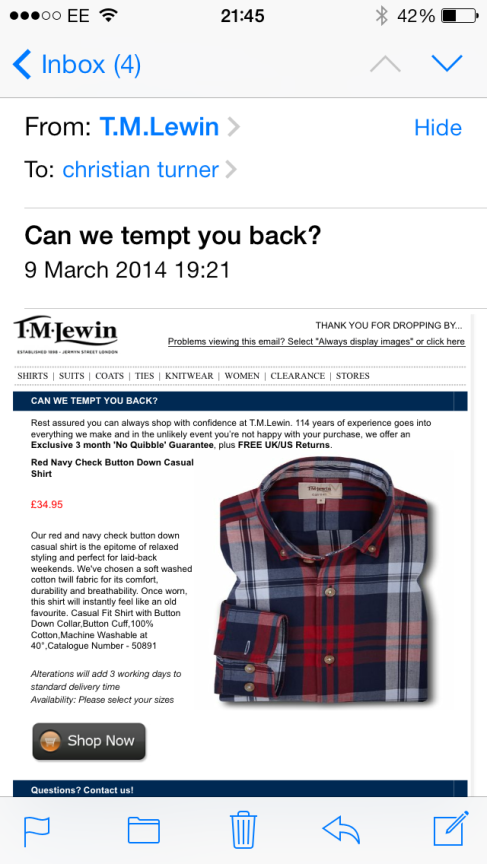I’ve recently completed a module on big data as part of the squared online course – a fantastic digital marketing qualification by Google. With such a wealth of data, it provides a great opportunity as marketers to serve timely, relevant, contextual and engaging communications to meet consumer needs identified by all this data in the first place – but is there such a thing as too much data?
I’ve used Chrome for a number of years now and I love the random but useful plug-ins and a recent favourite is Ghostery. This lets you see the number of cookies, tags, web trackers, ad networks, etc that a particular site has set up – and it’s fascinating to see just the sheer volume of tags that some sites use; to the point where I sometimes question just how worthwhile all this data is – and surely most of it is never used. This site for instance has 62 Ghostery tags on it – I’ll almost forgive them because it is a great article regarding #mashtags:
http://www.pocket-lint.com/news/127288-birds-eye-mashtags-potato-shapes-for-the-social-media-generation
With so much data available – why are some of the biggest companies so poor at utilising it? I thought I’d share a few recent examples where I have cringed or smiled applausingly at their use of ‘big data’. A few months ago I booked some flights to the USA with Opodo as they offered the best value of being able to book flights with multiple airlines. No sooner than a couple of days after booking the flights did I receive an email offering half price flights to the USA. Hello! I’ve just booked flights with you to the USA, why on earth would I be interested in half price flights when I’ve already booked them – where was the hotel, or car hire offers specific to the destinations I had booked? They now had a huge amount of personal data about me, and yet continued to push the mass blanket emails to me rather than offer me relevant and contextual offers. #cringe
This morning I got my weekly email from TM Lewin showcasing their new range of casual shirts. Now I love to play hard to get when it comes to marketing emails, probably because as a fellow marketer I’m less patient to poor experience – so for me to click through it really has to be relevant and interesting. One particular shirt took my fancy, and so I clicked through to the site and contemplated adding it to basket. I was on my iPhone and didn’t have a wallet to hand to make the purchase. Later this evening I received the following email – I know what you’re thinking, nice shirt huh?:
I actually love the subject line – well yes you can tempt me back as I really like this shirt. I specifically clicked through on this shirt this morning and I now want to buy it even more. Well done TM Lewin, brilliant use of big data – one impressed customer! #smile
Now there may be some who question or have a problem with the use of their personal data, but I believe that more people will come around as they have better experiences of it – the more relevant, timely, contextual and engaging the message is, the less consumers will resent it.
The only downside of ‘big data’ for marketers is that you are constantly bombarded with display/remarketing adverts for your own products. We spend so much time on our own sites, testing and looking to make improvements to user journeys and user experience – if only there were a way to prevent it. I love big data and it’s potential to make consumers smile – but sometimes it’s true what they say, less is more!

